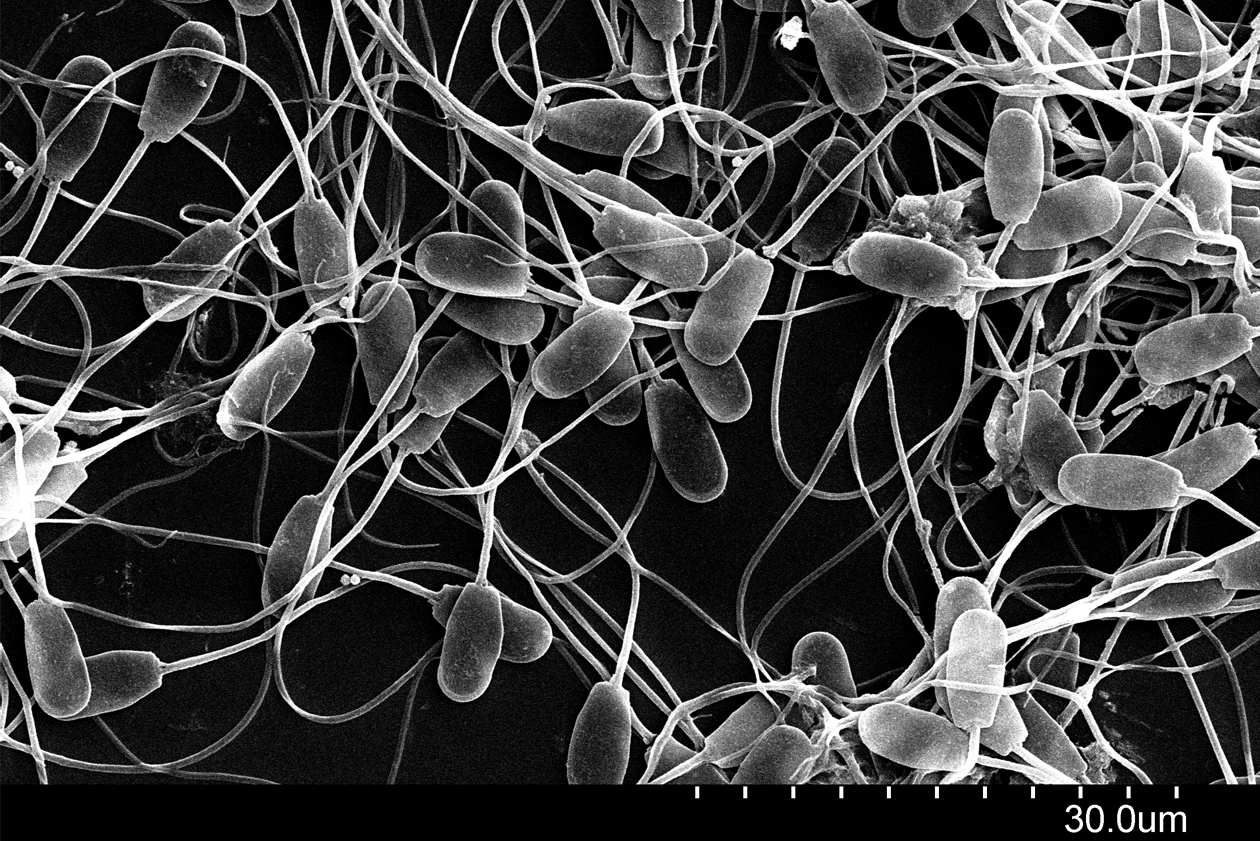The ejaculate consists of two main components: spermatozoa and seminal plasma. The later contains 95% water, together with a mixture of carbohydrates, ions, lipids, and proteins provided by the secretions of the accessory glands, the testicles, and the epididymis.
Once the spermatozoa have completed spermiogenesis, they are stored in the epididymis to complete their maturation. There the sperm incorporate substances secreted by the epididymal epithelium, including ions, lipids, and proteins. More than 125 different proteins and enzymes have been described in the porcine epididymal fluid alone, whose function, in addition to antioxidant defense, is to provide the spermatozoa with the ability to move and fertilize.
However, although the epididymal fluid is rich in a variety of molecules, only 2-5% of the ejaculate volume comes from the epididymis. In boars, most of the seminal plasma comes from the set of accessory glands (seminal vesicles, prostate, and bulbourethral glands) once the sperm is in the urethra at the time of ejaculation.
The accessory glands contribute most ions, energy substances, and proteins to the seminal plasma.
- The seminal vesicles produce a secretion rich in fructose (the main energy source) which is also alkaline in nature, thus protecting the spermatozoa from sudden changes in pH. It is a viscous liquid because it contains fibrinogen and contributes an important part of the final volume of the ejaculate. The proteins secreted by the seminal vesicles represent 80-90 % of the total protein content of the seminal plasma. Spermadhesins (glycoproteins of about 20 kDa) are the most abundant type of protein and are attributed to different functions, such as promoting sperm-oocyte interaction, capacitation, and protecting from head-head agglutination and lipid peroxidation. Another interesting protein secreted by these vesicles is the enzyme acid phosphatase, which is involved in metabolism and maintains the integrity of the plasma membrane.
- Prostatic secretions are produced mainly during the sperm fraction of the ejaculate and contain ions such as zinc and magnesium, fibrinogen, and enzymes (acid phosphatases, fibrinolysin, and transglutaminase). They also secrete immunomodulatory spermadhesins, to avoid the immune response against spermatozoa in the uterus. As for the function of the ions provided by the prostate and other accessory glands, sodium, and potassium regulate sperm motility; calcium and magnesium modulate sperm capacitation, and zinc, manganese, and iron are crucial for the correct functioning of some proteins and enzymes.
- The bulbourethral or Cowper’s glands secrete, through a canal at the beginning of the urethra, a whitish, highly viscous fluid called “tapioca” which is intercalated during ejaculation. This secretion contains mucin, sialic acid, and galactose. It has the important function of neutralizing the acidity of the urethra and the female’s vaginal secretion, thereby increasing the survival potential of spermatozoa in the female genital tract.
The complex composition of seminal plasma means that it has several functions. It is the transport medium for spermatozoa from ejaculation and serves as a metabolic support, providing nutrients and energy to the spermatozoa until their transit through the female reproductive tract. The numerous components of seminal plasma provide an optimal physicochemical environment for the cells (appropriate pH and osmolarity). It also plays an important role in the final maturation of the spermatozoa, through hormonal, enzymatic and structural changes in the sperm membrane. Finally, seminal plasma has the function of protecting spermatozoa against oxidative damage and modulating the inflammatory response after copulation, preventing them from being phagocytosed in the female reproductive tract.
In short, seminal plasma is a fundamental part of the ejaculate, and any variation in its composition, either due to pathological causes or changes in the boar’s nutrition, could affect sperm quality.
BIBLIOGRAPHY
Rodriguez-Martinez, H.; Martinez, E.A.; Calvete, J.J.; Peña Vega, F.J.; Roca, J. Seminal Plasma: Relevant for Fertility? Int. J. Mol. Sci. 2021, 22, 4368. https://doi.org/10.3390/ijms22094368
Caballero, I.; Vazquez, J.M.; García, E.M.; Parrilla, I.; Roca, J.; Calvete, J.J.; Sanz, L.; Martínez, E.A. Major proteins of boar seminal plasma as a tool for biotechnological preservation of spermatozoa. Theriogenology. 2008, 70, 8. https://doi.org/10.1016/j.theriogenology.2008.07.013
Bonet. S; Casas, I; Holt W.; Yeste, M. Boar (2013). Boar Reproduction: Fundamentals and New Biotechnological Trends (1ª edición). Springer Berlin, Heidelberg.




